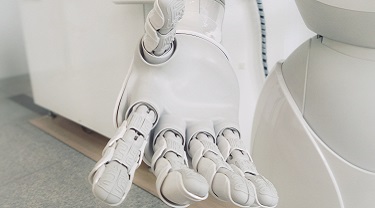Retailing giant Amazon Inc. is a top of mind organization using artificial intelligence (AI) and machine learning (ML) to drive innovation and create market disruption. So it came as a bit of surprise when it was reported in October that the company had decided to scrap its new AI-driven recruiting tool. The tool was designed to give potential job candidates a rating from one to five stars, but the team behind the HR engine discovered it was not rating candidates for software developer and technical jobs in a gender-neutral way. Female candidates were consistently scored lower.
The reason? The tool was working with a dataset of resumes submitted to the company over a 10-year period, most of which came from men, reflecting male dominance in the tech industry. Even after neutralizing certain terms, the development team behind the tool could not guarantee it wouldn’t find other ways to introduce gender bias in hiring recommendations.
Amazon’s experience with the tool underscores both opportunities and risks involved with the emergence of AI into all aspects of business operations, from customer service to human resources. It also draws attention to the need for greater diversity and gender balance in the field of AI research itself and its applications.
AI is driving innovation across industries and work functions
Using AI to drive innovation in companies and how AI is transforming the modern workforce are two themes of discussion at the Fortune Most Powerful Women Summit in Montreal on November 5-6. The location for these discussions was apt, given that Montreal is increasingly regarded as a leading global hub for research in artificial intelligence and machine learning.
Broadly speaking, artificial intelligence is the ability of a machine to observe information from its environment, which it can then use to learn, solve problems and make decisions. In many industries, AI is doing cognitive work that was formerly the province of human workers making decisions. These are just a few.
- AI applications are common and growing in industries where there is already a labour shortage. Agriculture is a good example. Robots are being developed to harvest crops at higher volumes and at a faster pace than humans, perform crop and soil monitoring, and machine learning models are being developed to predict environmental impacts on crop yield.
- Industries ranging from retail to travel and hospitality that have high-touch customer service requirements are increasingly using chatbots as part of their customer experience.
- Energy and mining companies are using cognitive AI to reduce friction from port scheduling and to track tankers to determine when they leave port, where they’re going, and how much petroleum or liquified natural gas they are transporting.
- AI can be used in software development help. Functions here include modeling new applications with the right architecture and user experiences, or analyzing the business value and impact for the organization.
The rise of automation and technology holds many potential advantages for Canadian exporters, including lower costs and new efficiencies.
Risks of artificial intelligence
But automation also poses risks for the global economy.
Advances in AI and machine learning have accelerated in recent years, increasing the potential applications into areas long thought of as human-only jobs. Automation and technology is now considered one of the top risks Canadian exporters have to manage as they move into new markets.
If automation and technology expand at a rapid pace, large numbers of people could be quickly out of work.
The example of Amazon’s failed recruiting engine highlights another potential pitfall of artificial intelligence: biased data sets. IBM, for example, is working on building machines that apply human values and ethics to decision-making to overcome biases, such as gender bias.
Women exporters and innovation
For Canadian companies looking to compete in the global economy, continual innovation is key to developing a unique selling proposition and maintaining relevance. Innovation is also closely tied to the success of your export strategy. In fact, research shows Canadian companies that sell outside of Canada are 25 per cent more innovative on average compared to companies that don’t.
Innovation can be a key to greater export success for Canadian women entrepreneurs. Our research shows that while 13.5 to 16% of Canadian SMEs are owned by women, only 7.5% of them sell their products or services outside of Canada. Women entrepreneurs face unique barriers to exporting and recognition of their innovation is one of them.
Research co-funded by BMO, the Government of Canada, Carleton University and The Beacon Agency found that most policies and financial assistance programs currently equate innovation solely with technological advances, and therefore don’t consider how women are innovating much more broadly. Additionally, many women entrepreneurs interviewed said they don’t feel welcome or included in the focus of mainstream networks, incubators and accelerators. They also feel there is an underrepresentation of female mentors and potential investors.
Canada’s AI landscape
A major challenge for Canadian companies that want to leverage AI is talent. Research shows that 42% of startup businesses in Canada plan to adopt AI into their business, but face major barriers in the time, cost and skills required to keep up with rapidly advancing technology. Similarly, an IBM survey of 5,000 CEOs found that 63% say they lack the talent to confidently manage AI, while 60% say adoption has been hindered by customer trust and compliance concerns.
Development of AI capabilities and know-how for Canadian small and medium-sized business to help them scale and be globally competitive is central to the government’s innovation strategy.
Pan-Canadian AI strategy
The Pan-Canadian Artificial Intelligence Strategy is designed to increase the number of highly-skilled researchers and graduates, by enhancing research capabilities and discoveries through collaboration across three centres of excellence. It also seeks to demonstrate global leadership around the economic, ethical, policy and legal implications of AI advancement.
The strategy is led by the Canadian Institute for Advanced Research (CIFAR) with $125 million support from the federal government.
Canada’s AI Supercluster
As part of Canada’s Innovation and Skills plan the federal government has invested $950 million over five years to support business led innovation superclusters. One of the five superclusters is the AI-Powered Supply Chains Supercluster (SCALE.AI), based in Quebec and encompassing the Quebec-Windsor corridor.
The mission of SCALE.AI is to bring the retail, manufacturing, transportation, infrastructure, and information and communications technology sectors together to build intelligent supply chains through artificial intelligence and robotics. Its main goal is to help Canadian small and medium-sized businesses scale up and help ensure Canada is a globally competitive export leader. Over 100 companies, institutions and associations are working together to achieve this goal.
A key objective of SCALE.AI is fostering more diversity and inclusion in the field of AI through college and university curriculums and employee re-skilling programs.







